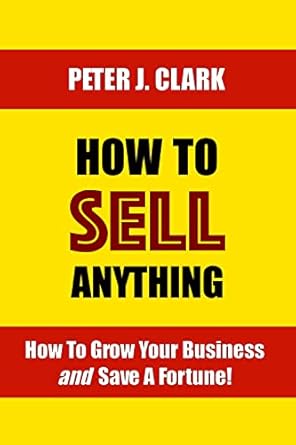Marketers are failing to prove their worth
Only 1 in 5 marketers earns top marks from the C-Suite for their ability to prove their value and contribution, compared to 1 in 4 marketers in previous years, according to the 14th annual Marketing Performance Management (MPM) Study from VisionEdge Marketing.
The research is conducted each year to provide insights into what the Best-in-Class (BIC) marketers are doing better - or differently - to both improve and prove the value of the marketing function. The 2015 research (a joint effort by VisionEdge Marketing and Demand Metric), identified five key differences that enable marketers to excel at marketing performance management:
- The pressure on the marketing team to prove their contribution to the business has not abated; the way marketing organisations respond to this pressure differs significantly and are defining. Nearly twice as many BIC marketing organisations have a performance management plan compared to their Laggard colleagues.
- The BIC group is 5 times more likely to operate as a centre of excellence compared to the Laggards.
- The BIC group is 2 times more likely to have knowledge of the core business.
- The BIC group is 5 times more likely to use data in an effort to understand and market to customers. For example, only 10% of the Laggards claim to effectively understand the customer experience based on data compared to nearly 50% of the BIC group.
- Compared to the Laggards, the BIC Group is nearly 2 times more likely to use data and analytics to make strategic decisions and recommendations.
As a result of their approach and performance management competencies, at least 55% of the BIC marketers improved their ability to impact four business performance indicators: win rate, pipeline value, customer retention, and net new customer acquisition. The percentage for the Laggards who can connect their activities and investments to these competencies remains far lower.
"The differences between the Best-in-Class and the rest comes down to a few simple things: focus and commitment to excellence," said Laura Patterson, president for VisionEdge Marketing. "The BIC marketers are outdistancing their colleagues not because they have more time, are any smarter, or have more money, but because they see the value in making performance measurement a priority and invest in techniques and talent to accelerate their efforts."
Low marks this year
A key component of the annual study is the grade that the C-Suite gives their marketing teams for their ability to prove their value. In 2015 the allocation of grades were:
- Just over 20% of marketers earned an A, the highest grade;
- 30% earned a B;
- The remainder (some 50%) earned a C or lower.
Four key factors
The study establishes that a marketing organisation's grade strongly correlates to differences in four important areas:
- The priority or importance attached to measuring marketing's value and contribution.
- Having a well-defined and documented plan for improving performance management and business impact.
- Ensuring alignment of marketing with metrics and business outcomes that matter to the C-suite.
- Addressing the way marketing operates, ideally as a 'Centre of Excellence'.
Over the years the research has helped characterize the differences between these groups. Those earning an A (Value Creators) operate as business people first and focus on creating value for customers and shareholders. The B's (Sales Enablers) see themselves in service to the sales team and are primarily focused on demand generation, and the Cs and Ds (Campaign Producers) operate more like internal agencies or on-demand service providers. Only a third of the Campaign Producers have well-defined and documented plan for improving performance management and business impact compared to almost three-fourths of the Value Creators.
What separates the good and bad
One of the key differences between the Best-in-Class and the rest is how marketing organisations operate. Almost half of Best-in-Class marketing organisations exemplify or function as centres-of-Excellence (CoE); whereas less than 20% of the Sales Enablers and less than 10% of the Campaign Producers function as a CoE. The study reveals a strong link between marketing's designation as a CoE and the presence of a marketing operations function. Over two-thirds of Best-in-Class marketing organisations have a marketing operations function, but only half of the Sales Enablers and only about 40% of the Campaign Producers have a marketing operations function.
The marketing operations function is potentially tasked with a wide range of responsibilities, but there are two worth noting that account for substantial gaps between the Best-in-Class and Laggard organisations:
- Marketing data management: considers collection storage, hygiene, access and effective use of data.
- Marketing strategic planning: measures the extent to which marketing is intentional about determining a direction aligned with corporate objectives, and then pursuing it.
"Despite the steady pressure on all marketing organisations to measure and prove their contribution, the gap between Best-in-Class marketing organisations and all others is widening," said Jerry Rackley, chief analyst with Demand Metric. "One of the reasons is simply what these organisations understand about the businesses they serve. It's impossible to understate the importance of business acumen. When marketers understand how a business works, they are able to participate in and contribute to all aspects of how that business creates value."
Widening the gap
The BIC are almost twice as likely as Laggards to use marketing metrics to show the connection between marketing's results and corporate business objectives.
This year's study also found that Best-in-Class marketing organisations are not only maintaining their lead over the rest of the marketing field, but widening it by focusing on four strategic areas:
- Business acumen;
- Customer knowledge;
- Data and analytics-based strategy;
- Performance-based marketing plans.
Sources: VisionEdge Marketing; Demand Metric / The Marketing Factbook.
Copyright © 2015 - 2025 The Marketing Factbook.
Categorised as:
- Customer Experience
- Knowing The Customer
- Marketing Know-How
- Marketing Technology
